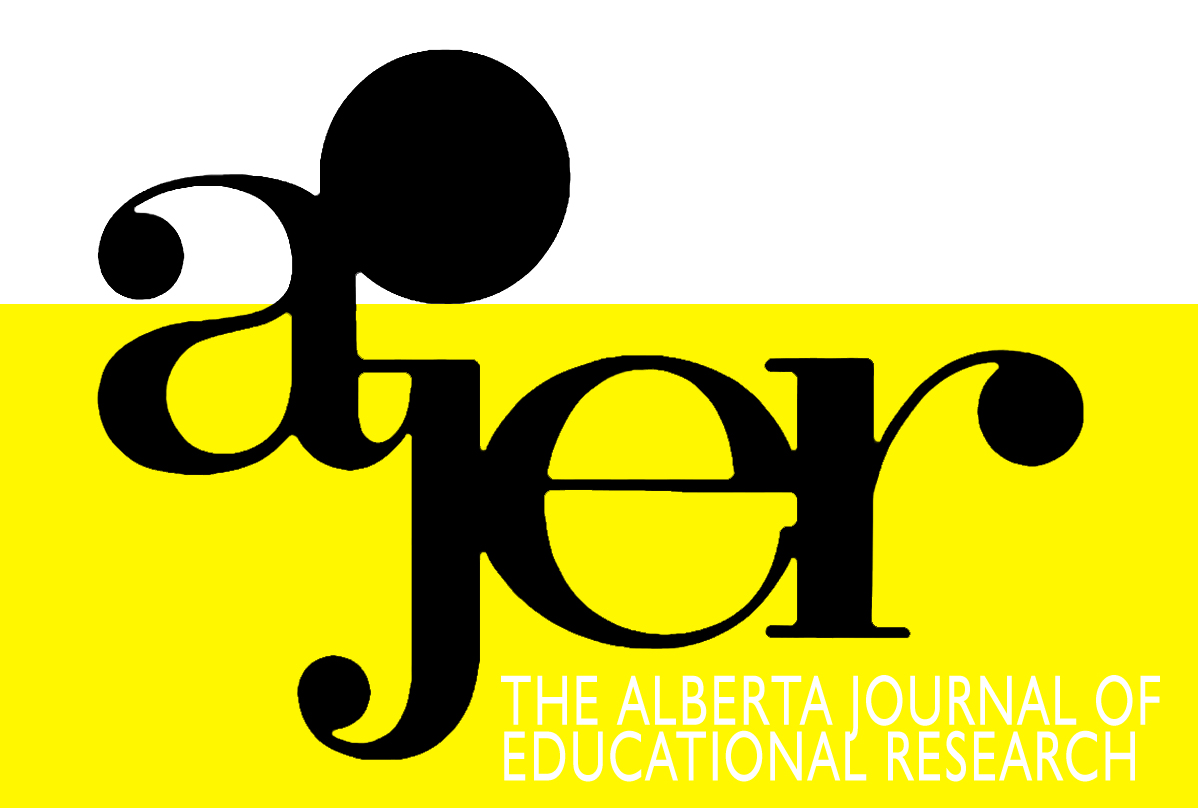Reflecting on the Junior High Instrumental Music Curriculum in Alberta Through the Lens of the Tanglewood Declaration
DOI:
https://doi.org/10.55016/ojs/ajer.v69i3.77141Abstract
In 1967, The Tanglewood Symposium was convened in the United States to address the multifaceted issues in music education. The discussion in the Symposium led to the creation of the Tanglewood Declaration, which includes eight statements of implications and recommendations for the music curriculum and has been considered a critical part of the music education profession. Although it was produced 56 years ago, the insight into pedagogical and curricular adjustments is still deemed to be needed in music classrooms across both the United States and Canada today, as the issues in music education in these two nations were found to be similar. In Alberta, the most recent junior high music curriculum was designed in 1988, 21 years after the announcement of the Tanglewood Declaration. This study investigated whether the ideas in the Tanglewood Declaration have permeated the current junior high instrumental music curriculum in Alberta from three aspects: (a) musical multiculturalism, (b) individualization, and (c) technology. It is evident that parts of the ideas in the Declaration could be traced in the Alberta curriculum. This paper concludes with recommendations for future curriculum development made through the perspectives of the Tanglewood Declaration.
Keywords: Alberta, instrumental music, music curriculum, Tanglewood Declaration, Tanglewood Symposium
En 1967, le symposium de Tanglewood a été organisé aux États-Unis pour aborder les multiples facettes de l'éducation musicale. Les discussions du symposium ont abouti à la création de la déclaration de Tanglewood, qui comprend huit déclarations d'implications et de recommandations pour le programme d'études de musique et qui est considérée comme un élément essentiel de la profession d'éducateur de musique. Bien que la déclaration ait été rédigée il y a 56 ans, la vision des ajustements à apporter à la pédagogie et aux programmes est toujours jugée nécessaire dans les classes de musique aux États-Unis et au Canada aujourd'hui, car les problèmes liés à l'éducation musicale dans ces deux pays se sont révélés similaires. En Alberta, le programme d'études de musique le plus récent pour le premier cycle du secondaire a été conçu en 1988, soit 21 ans après l'annonce de la déclaration de Tanglewood. Cette étude a cherché à savoir si les idées de la déclaration de Tanglewood ont imprégné le programme actuel de musique instrumentale du premier cycle du secondaire en Alberta sous trois aspects : (a) le multiculturalisme musical, (b) l'individualisation, et (c) la technologie. Il est évident que certaines idées de la déclaration se retrouvent dans le curriculum de l'Alberta. Cet article se termine par des recommandations pour le développement futur des programmes d'études, formulées dans la perspective de la déclaration de Tanglewood.
Mots clés : Alberta, musique instrumentale, programme d'études de musique, déclaration de Tanglewood, symposium de Tanglewood
Downloads
Downloads
Published
How to Cite
Issue
Section
License
UNIVERSITY OF ALBERTA COPYRIGHT LICENSE AND PUBLICATION AGREEMENT
If accepted, authors will be asked to sign a copyright agreement with the following points:
A. Where there is any inconsistency between this Copyright License and Publication Agreement and any other document or agreement in relation to the same subject matter, the terms of this Agreement shall govern.
B. This document sets out the rights you are granting in relation to publication of your article, book review, or research note entitled (the “Article”) through inclusion in the academic journal titled Alberta Journal of Educational Research (the “Journal”) published through the Faculty of Education, representing the Governors of the University of Alberta (the “Journal Editor”).
C. There will be no payment to you for this publication and grant of rights. In consideration of the agreement to publish the Article in the Journal:
1. You are warranting that:
- the content of the Article is your original work, and its content does not contain any material infringing the copyright of others; or, where the Article is not entirely your original work, you have obtained all necessary permissions in writing to grant the rights you are giving in this agreement;
- the content of the Article does not contain any material that is defamatory of, or violates the privacy rights of, or discloses the confidential information of, any other person;
- the Article has not been published elsewhere in whole or in part, and you will not allow publication of the Article elsewhere without the consent of the Journal Editor;
- the names of all co-authors and contributors to the Article are:
2. You agree to license the copyright in the Article to the Journal Editor, on a worldwide, perpetual, royalty free basis; and to the extent required by the terms of this agreement. You shall retain the right at all times to be acknowledged as the/an author of the Article.
3. You further agree that the Journal Editor has the entitlement to deal with the Article as the Journal Editor sees fit, and including in the following manner;
- The right to print, publish, market, communicate and distribute the Article and the Journal, in this and any subsequent editions, in all media (including electronic media), in all languages, and in all territories, ing the full term of copyright, and including any form of the Article separated from the Journal, such as in a database, abstract, offprint, translation or otherwise, and to authorize third parties to do so;
- The right to register copyright of the Journal;
- The right to edit the Article, to conform to editorial policy as the Journal Editor sees fit.
4. If any co-author or contributor to the Article does not sign this agreement, the Journal Editor reserves the right to refuse to publish the Article.



